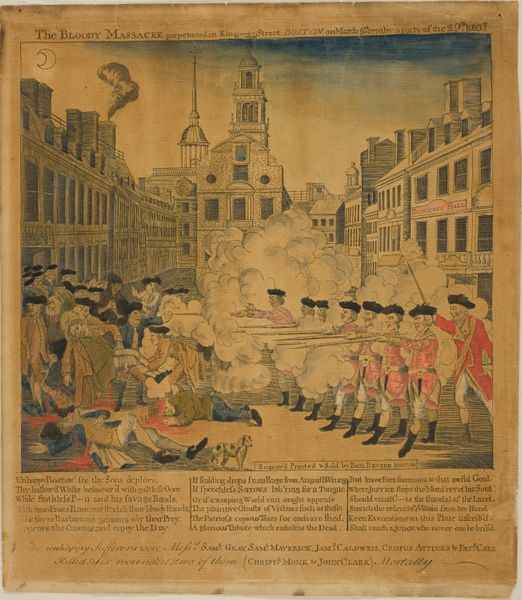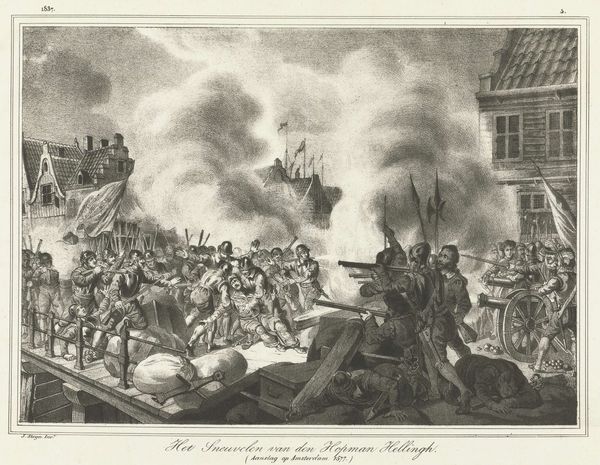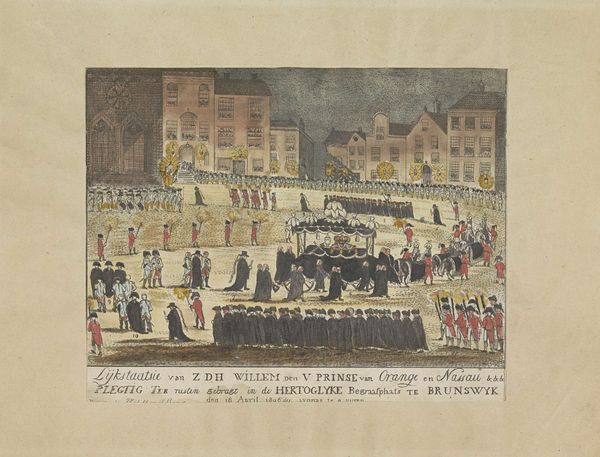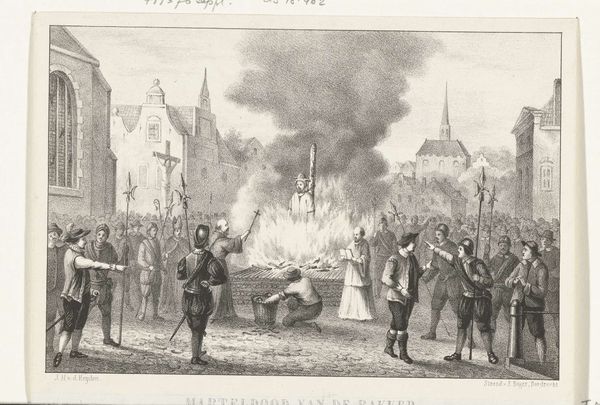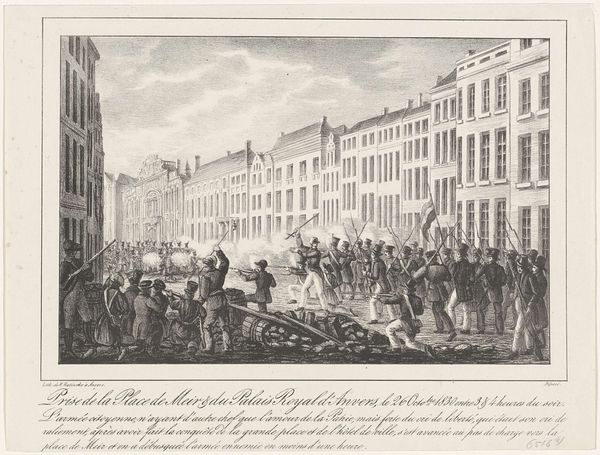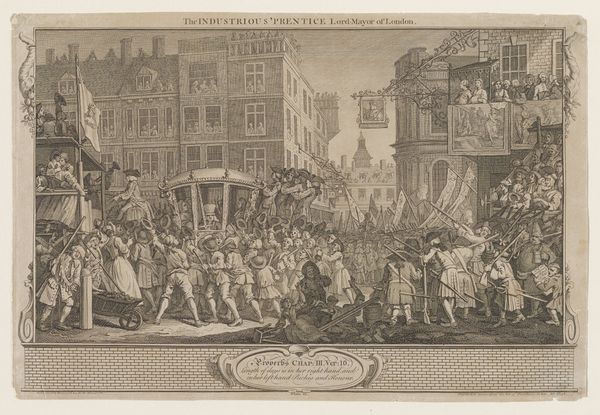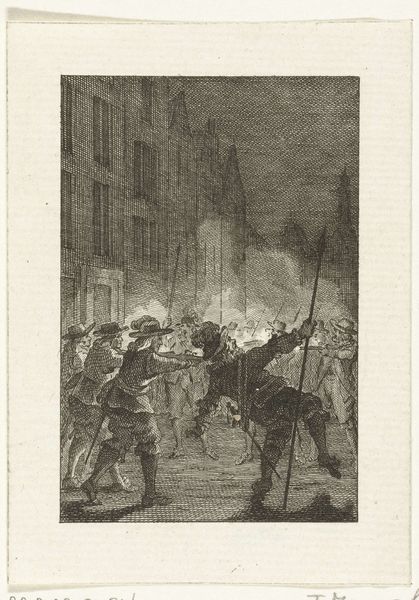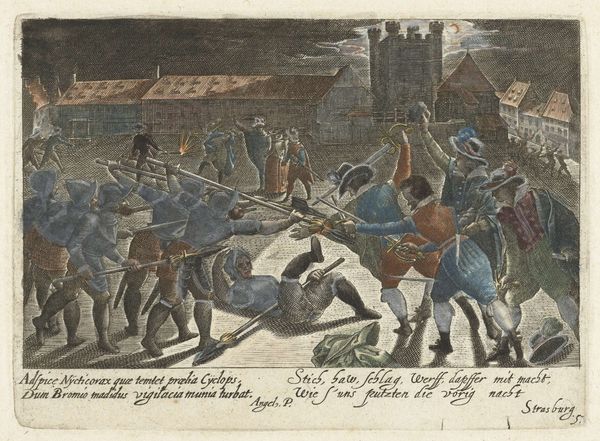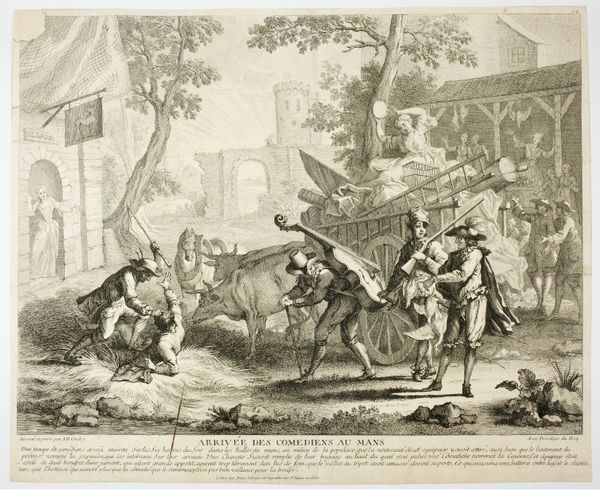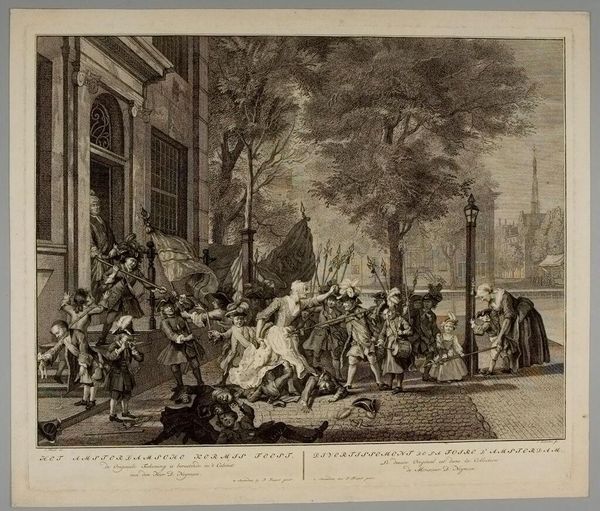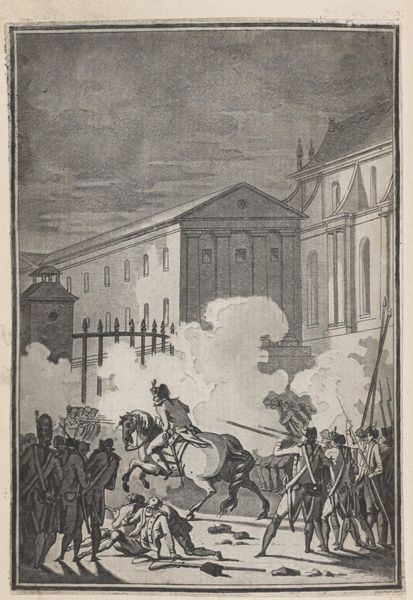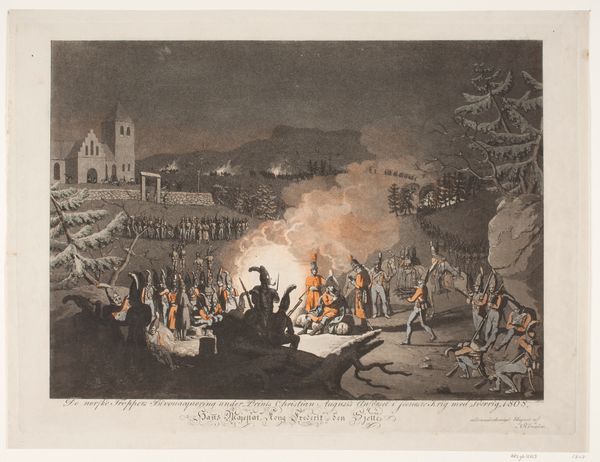
mixed-media, print, etching
#
mixed-media
#
narrative-art
# print
#
etching
#
figuration
#
coloured pencil
#
romanticism
#
cityscape
#
history-painting
#
mixed media
Dimensions: height 322 mm, width 412 mm
Copyright: Rijks Museum: Open Domain
Curator: Before us is a print titled "Gevechten bij de Schaarbeekse Poort in Brussel, 1830" – "Fights at the Schaarbeek Gate in Brussels, 1830." The artist is anonymous, and the piece is a mixed-media work, combining etching and what appears to be colored pencil. It resides here at the Rijksmuseum. Editor: My first impression is of organised chaos. There’s a stark contrast between the neat lines of soldiers and the billowing smoke, figures leaning out windows, suggesting disorder and desperation amidst the rigidity of the military advance. Curator: Indeed. The image depicts a key moment in the Belgian Revolution. This particular event, as noted in the caption, captures the entrance of the Koninklyke Nederlandsche troops through the Schaarbeek Gate in Brussels on September 23, 1830. This was a pivotal point, as Brussels was in full revolt against Dutch rule. What resonates with you symbolically? Editor: Well, the buildings are a significant part of it, the typically Dutch gabled architecture juxtaposed with figures in windows, throwing projectiles, creates a powerful symbolic representation. Homes become battlements and they're no longer private spaces, but deeply implicated in political unrest, a kind of popular insurgency using domestic spaces against state power. Note also the strategic deployment of smoke that partly obscures both architecture and bodies. Curator: That's insightful. Consider that history painting, in this era, often focused on heroic narratives or decisive battles involving leaders. This print, however, illustrates street-level combat, citizens actively participating, suggesting a broader narrative of popular revolt against the reigning monarchs. The choice to represent it as a print also points to broader public accessibility and the rapid circulation of revolutionary imagery. Editor: Precisely, prints allow stories to spread like wildfire! Even the somewhat naive coloring seems deliberate. This work’s roughness doesn't glorify war; instead, it speaks directly to those experiencing the turmoil. Also, it's intriguing how they suggest fire from upper level buildings, as they also suggest domestic uprising of citizenry against soldiers marching below them. Curator: Absolutely. It serves as both historical documentation and a form of propaganda, shaping public perception of the events as they unfolded. Its value is not in its artistic skill, perhaps, but in its documentary and socio-political charge. Editor: Looking at it with fresh eyes, this print is less about refined art, and more a potent relic capturing that messy collision of order and uprising, making a familiar past startlingly relevant.
Comments
No comments
Be the first to comment and join the conversation on the ultimate creative platform.
